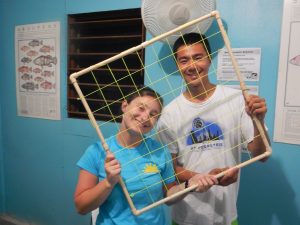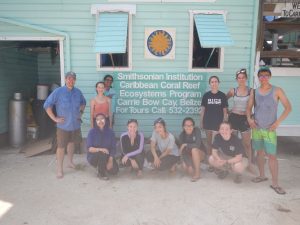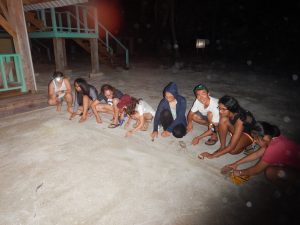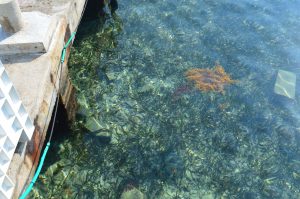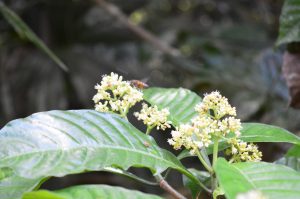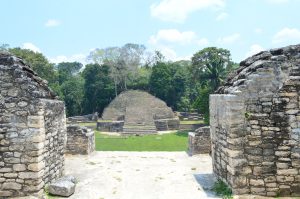Today was a day dedicated to the use of a systematic sampling method, utlilizing measuring tapes and a large physical grid. We answered questions like: What proportion of the patch reef contains some portion of live hard coral and what proportion of the seaweed benthos contains some portion of worm sand mounds?
To remind us of the importance of our work, and mostly to educate us on the overarching context of coral reefs, Ceyda Sidd ’19 explained that the percent cover of corals in Belizean waters is 13 – 15% and declining. Tomorrow we will be analyzing the data we collected today on percent cover of live hard corals to estimate the degree of decline in coral cover. One of the things that we have learned about working with corals is that it is in our best interest to not touch them. We saw fire corals, that upon contact can sting, and all corals are sensitive to human touch, such that it can destroy or stop the growth corals. The difficulty is real, though, as many of the patch corals exist in waters less than 3 ft deep, and some areas are too shallow to even swim across without touching some corals. Even conservation workers sometimes will cause harm to the things they wish to conserve; the act of quantifying and observing is sometimes inevitably an act of slight destruction. In snorkeling lingo, we all aim to be horizontal (floating) and not vertical (standing).
In the evening, we laid in hammocks with the company of incroaching lightning storms, which provided us with fantastic views and some rain. If we did end up stranded, which we are 80-95% likely to (someone jokingly said),I think none of us would be too distraught. The days here sucks out your energy, but in the best way possible: in the sun, under the water, above the benthos, and next to marine creatures.


